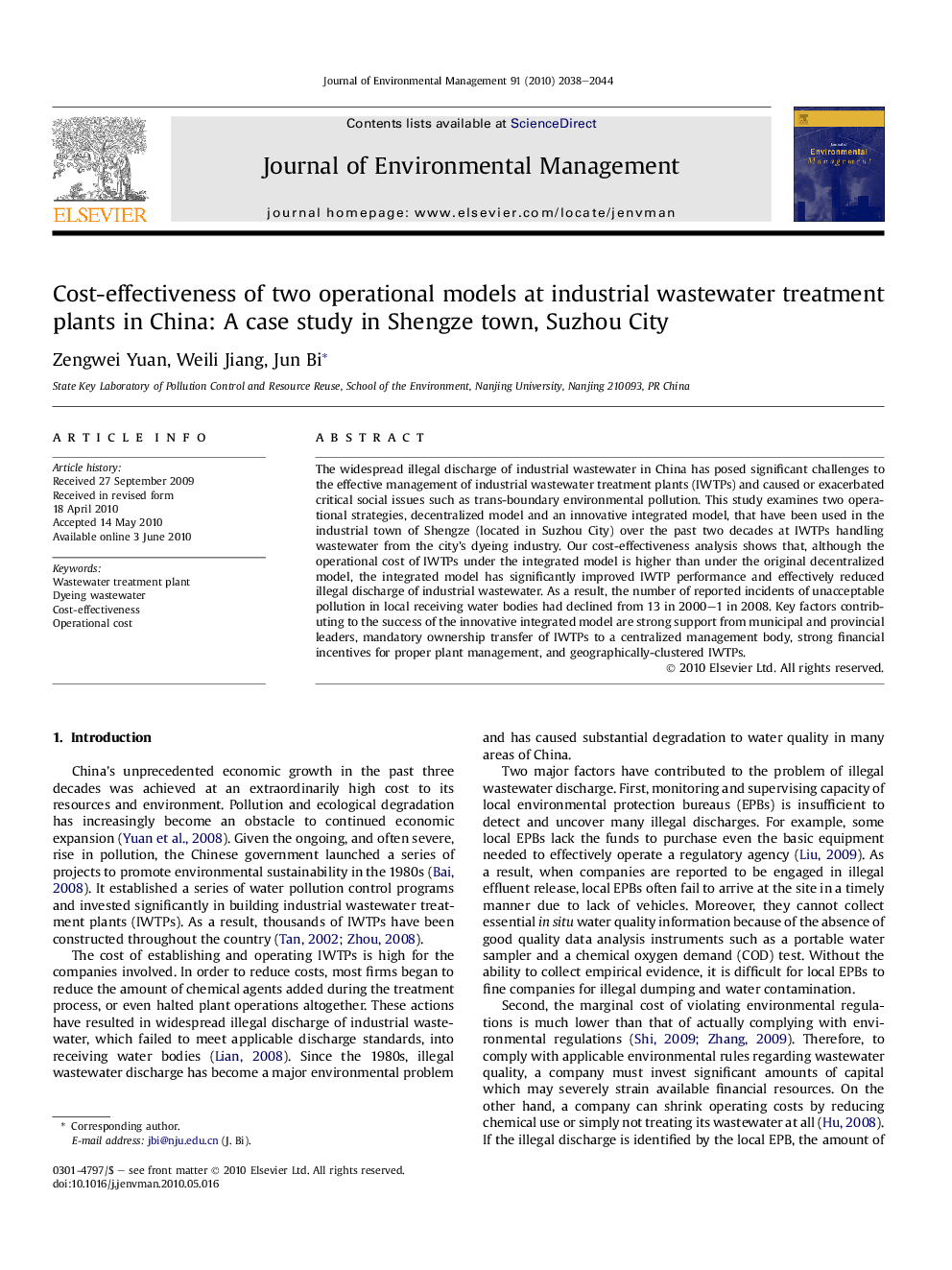| Article ID | Journal | Published Year | Pages | File Type |
|---|---|---|---|---|
| 1057348 | Journal of Environmental Management | 2010 | 7 Pages |
The widespread illegal discharge of industrial wastewater in China has posed significant challenges to the effective management of industrial wastewater treatment plants (IWTPs) and caused or exacerbated critical social issues such as trans-boundary environmental pollution. This study examines two operational strategies, decentralized model and an innovative integrated model, that have been used in the industrial town of Shengze (located in Suzhou City) over the past two decades at IWTPs handling wastewater from the city’s dyeing industry. Our cost-effectiveness analysis shows that, although the operational cost of IWTPs under the integrated model is higher than under the original decentralized model, the integrated model has significantly improved IWTP performance and effectively reduced illegal discharge of industrial wastewater. As a result, the number of reported incidents of unacceptable pollution in local receiving water bodies had declined from 13 in 2000–1 in 2008. Key factors contributing to the success of the innovative integrated model are strong support from municipal and provincial leaders, mandatory ownership transfer of IWTPs to a centralized management body, strong financial incentives for proper plant management, and geographically-clustered IWTPs.
